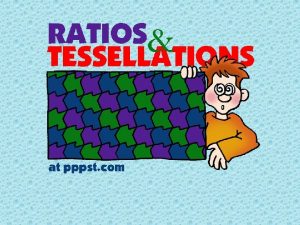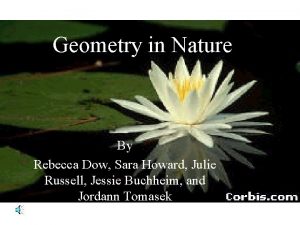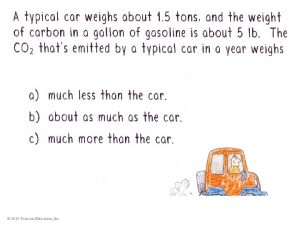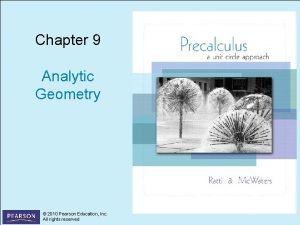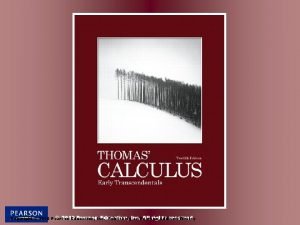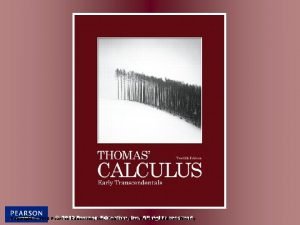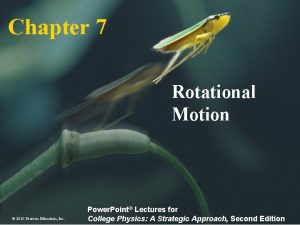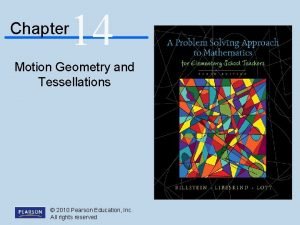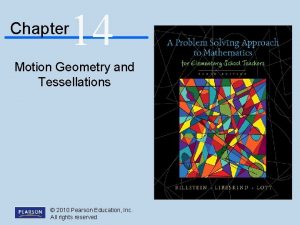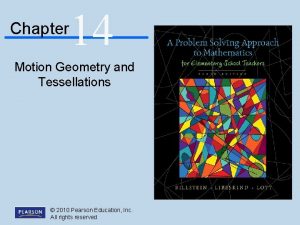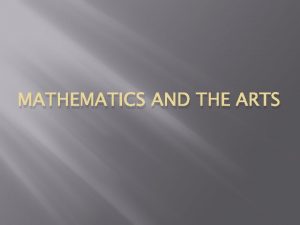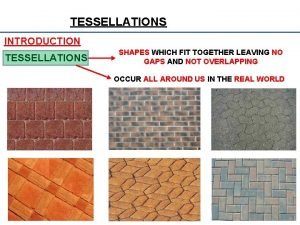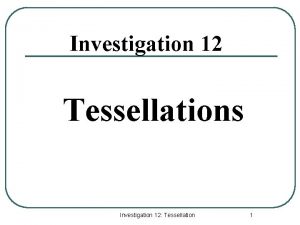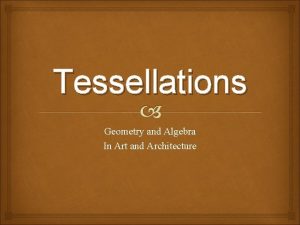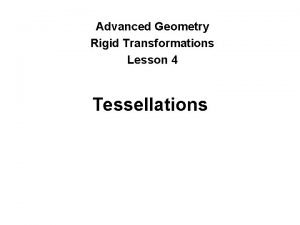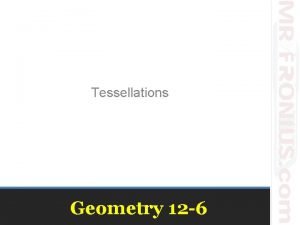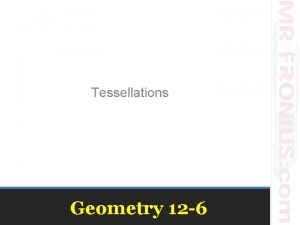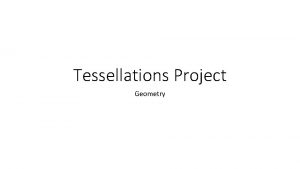Chapter 14 Motion Geometry and Tessellations 2010 Pearson

















- Slides: 17

Chapter 14 Motion Geometry and Tessellations © 2010 Pearson Education, Inc. All rights reserved

NCTM Standard: Motion Geometry Young children come to school with intuitions about how shapes can be moved. Students can explore motions such as slides, flips, and turns by using mirrors, paper folding, and tracing. Later, their knowledge about transformations should become more formal and systematic. In grades 3– 5 students can investigate the effects of transformations and begin to describe them in mathematical terms. Using dynamic geometry software, they can begin to learn the attributes needed to define a transformation. Copyright © 2010 Pearson Education, Inc. All rights reserved. 2

NCTM Standard: Motion Geometry In the middle grades, students should learn to understand what it means for a transformation to preserve distance, as translations, rotations, and reflections do. . At all grade levels, appropriate consideration of symmetry provides insights into mathematics and into art and aesthetics (p. 43). Copyright © 2010 Pearson Education, Inc. All rights reserved. 3

14 -3 Size Transformations § Applications of Size Transformations Copyright © 2010 Pearson Addison-Wesley. All rights reserved. 4

Size Transformations Isometries preserve distance; so an image under isometry is congruent to the original image. A different type of transformation is created when a slide is projected on a screen. The objects on the screen are enlarged from their original size on the slide by some factor. Copyright © 2010 Pearson Education, Inc. All rights reserved. 5

Size Transformations Scale factor of 20 Copyright © 2010 Pearson Education, Inc. All rights reserved. 6

Size Transformations Each side of ΔA′B′C′ is twice as long as the corresponding sides of ΔABC. Copyright © 2010 Pearson Education, Inc. All rights reserved. 7

Size Transformations A size transformation from the plane to the plane with center O and scale factor r (r > 0) is a transformation that assigns to each point A in the plane the point A′ such that O, A, and A′ are collinear and OA′ = r. OA and such that O is not between A and A′. Copyright © 2010 Pearson Education, Inc. All rights reserved. 8

Size Transformations It is possible to define a size transformation when the scale factor is negative in the same way as in the preceding definition for positive scale factor, except that O must be between A and A′. Also, note that a size transformation is sometimes called a dilation. Copyright © 2010 Pearson Education, Inc. All rights reserved. 9

Example 14 -9 Find the image of the quadrilateral ABCD under a size transformation with center O and scale factor Copyright © 2010 Pearson Education, Inc. All rights reserved. 10

Size Transformations A size transformation with center O and scale factor r (r > 0) has the following properties: § The image of a line segment is a line segment parallel to the original segment and r times as long. § The image of an angle is an angle congruent to the original angle. Copyright © 2010 Pearson Education, Inc. All rights reserved. 11

Example 14 -9 Show that ΔABC is the image of ΔADE under a size transformation. Identify the center of the size transformation and the scale factor. , so A is the center of the size transformation and the scale factor is 2. Copyright © 2010 Pearson Education, Inc. All rights reserved. 12

Example 14 -10 Show that ΔABC is the image of ΔAPQ under a succession of isometries with a size transformation. Transform ΔAPQ by a half-turn in A to obtain ΔAP′Q′. C is the image of Q′ under a size transformation with center at A and scale factor 2. B is the image of P′ and A is the image of itself under this transformation. Copyright © 2010 Pearson Education, Inc. All rights reserved. 13

Example 14 -10 (continued) Therefore ΔABC can be obtained from ΔAPQ by first finding the image of ΔAPQ under a half-turn in A and then applying a size transformation with center A and scale factor 2 to that image. Copyright © 2010 Pearson Education, Inc. All rights reserved. 14

Similar Figures Two figures are similar if it is possible to transform one onto the other by a sequence of isometries followed by a size transformation. Copyright © 2010 Pearson Education, Inc. All rights reserved. 15

Applications of Size Transformations One way to make an object appear threedimensional is to use a perspective drawing. For example, to make a letter appear threedimensional we can use a size transformation with an appropriate center O and a scale factor with selected images to create a three dimensional effect for the letter C. Copyright © 2010 Pearson Education, Inc. All rights reserved. 16

Applications of Size Transformations Copyright © 2010 Pearson Education, Inc. All rights reserved. 17
 Square triangle tessellation
Square triangle tessellation Demi-regular tessellations
Demi-regular tessellations He is the father of tessellation
He is the father of tessellation Images of tessellations
Images of tessellations Polygons in nature
Polygons in nature Theory of structures
Theory of structures 2010 pearson education inc
2010 pearson education inc 2010 pearson education inc
2010 pearson education inc 2010 pearson education inc
2010 pearson education inc 2010 pearson education inc answers
2010 pearson education inc answers 2010 pearson education inc answers
2010 pearson education inc answers 2010 pearson education inc answers
2010 pearson education inc answers 2010 pearson education inc
2010 pearson education inc 2010 pearson education inc
2010 pearson education inc Copyright 2010 pearson education inc
Copyright 2010 pearson education inc 2010 pearson education inc
2010 pearson education inc Copyright 2010 pearson education inc
Copyright 2010 pearson education inc 2010 pearson education inc answers
2010 pearson education inc answers
